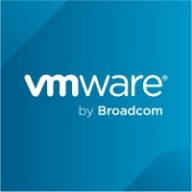

NinjaOne and VMware vCenter are tools for IT management and virtualization, respectively. NinjaOne is known for its intuitive management capabilities, while VMware vCenter offers robust virtualization solutions favored in enterprise environments.
Features: NinjaOne users value remote monitoring and management capabilities, automation features, and a user-friendly design. VMware vCenter is praised for advanced virtualization features like vMotion and robust resource management. Users find vCenter's feature set significantly more advanced but also more complex to manage.
Room for Improvement: Users suggest NinjaOne could benefit from expanded integration options and more advanced automation features. VMware vCenter users indicate a need for better cost efficiency and simpler management tools to reduce the complexity of their operations.
Ease of Deployment and Customer Service: NinjaOne is known for a straightforward deployment process and responsive customer service. vCenter's deployment is more complex and time-consuming, but its customer service is regarded as highly knowledgeable though sometimes slow to respond.
Pricing and ROI: NinjaOne is considered cost-effective with a quick return on investment due to lower setup costs and subscription pricing. VMware vCenter, while more expensive upfront and operationally, provides substantial ROI for larger enterprises through its extensive, high-value features that justify the price for those requiring advanced virtualization capabilities.
NinjaOne enables significant time savings, reducing my workload by 40% to 50%, primarily due to remote management capabilities.
The customer support at NinjaOne is excellent, rated ten out of ten.
Our experience with escalation supports, including auto escalation to third-level or engineering support, has been very positive.
I rate customer service and support for NinjaOne at seven out of ten due to slow response times.
VMware vCenter manages high availability effectively.
The technical support is good.
I would rate the scalability of NinjaOne as ten out of ten.
The design suggests it is scalable.
On a scale of one to ten, I would rate its scalability as ten.
The scalability is good in vCenter.
The solution is completely scalable as we can increase any host with great simplicity.
I would rate the stability a ten out of ten.
We have not faced any issues after upgrading VMware vCenter, whether on the vCenter or any host.
Security and reporting, including business intelligence tools, are adequate.
The inclusion of XENServer and Proxmox as virtual platforms in NinjaOne is currently missing.
The network monitoring needs to be improved.
The licensing model has shifted, leading to higher costs, particularly for smaller organizations.
The license cost has increased significantly, which is the primary negative aspect of VMware vCenter.
Better redundancy options can be achieved by using multiple vCenter machines.
The pricing for NinjaOne is appropriate for small companies.
NinjaOne is reasonably priced, particularly with the inclusion of TeamViewer, SentinelOne, and Bitdefender.
The price or licensing of NinjaOne is a little bit high.
The licensing model now requires purchasing 96-core solutions, even if fewer cores are needed, adding to the cost burden.
A significant feature of NinjaOne is its remote access capability, which is essential for my clients’ home office usage.
The software's automation tools have solved critical deployment problems for small businesses.
Every month, every quarter, I see new features, and it is always evolving.
High availability is employed so if an ESXi server is down, the VM is supported on another ESXi on other servers.
The high availability feature is particularly valuable when a host goes down or experiences high usage, as it automatically migrates VMs to other hosts to balance performance.
VMware vCenter is excellent for managing and monitoring hypervisors, specifically with features like live migration, storage vMotion, and host vMotion.
| Product | Market Share (%) |
|---|---|
| VMware vCenter | 1.0% |
| NinjaOne | 2.5% |
| Other | 96.5% |


| Company Size | Count |
|---|---|
| Small Business | 16 |
| Midsize Enterprise | 2 |
| Large Enterprise | 1 |
| Company Size | Count |
|---|---|
| Small Business | 15 |
| Midsize Enterprise | 5 |
| Large Enterprise | 18 |
NinjaOne provides comprehensive remote monitoring, troubleshooting, and automation via a user-friendly web interface. With a robust mobile app and integration capabilities, it appeals to small businesses seeking cost-effective management solutions.
NinjaOne is designed to streamline IT operations through its remote monitoring, patch management, and automation capabilities. Its integration with Bitdefender and ongoing feature enhancements are valuable, although users express a desire for more third-party compatibility and smoother deployment processes. The platform's SLA system enhances performance tracking, while its continual development is a key attraction. Despite some calls for a more intuitive graphical interface and advanced reporting features, it remains an asset for managed service providers and businesses adapting to cloud-based environments.
What are the most important features?NinjaOne is widely employed across different sectors for server and workstation management, network infrastructure oversight, and client computer support. With its cloud-based framework, it supports managed service providers and businesses shifting to the cloud, ensuring seamless software deployment and improved asset management, making it integral to modern IT environments.
VMware vCenter provides centralized management for virtual machines, offering enhanced resource control, high availability, and data protection. Its integration with NSX and vSAN simplifies infrastructure management, although improvements in pricing, licensing, and technical support are needed.
VMware vCenter streamlines the management of virtual infrastructures, facilitating scalability and elasticity through features like DRS, vMotion, and snapshot capabilities. While users appreciate its centralized control and extensive integration options, complexities in interface and upgrades are seen as challenges. Issues like fragmented licensing, difficult Fault Tolerance management, and high resource demands have been highlighted, alongside the need for enhanced security, monitoring, and seamless cloud integration. vCenter is widely used in data centers for overseeing large virtual environments, integrating cloud services, and providing infrastructure as a service.
What are the main features of VMware vCenter?
What benefits and ROI should users expect?
Industries such as IT, finance, healthcare, and government deploy VMware vCenter to manage their extensive virtual environments. Users rely on its automation and centralized management capabilities to ensure high performance and uptime in data center operations, often leveraging it to integrate with cloud services.
We monitor all Server Monitoring reviews to prevent fraudulent reviews and keep review quality high. We do not post reviews by company employees or direct competitors. We validate each review for authenticity via cross-reference with LinkedIn, and personal follow-up with the reviewer when necessary.